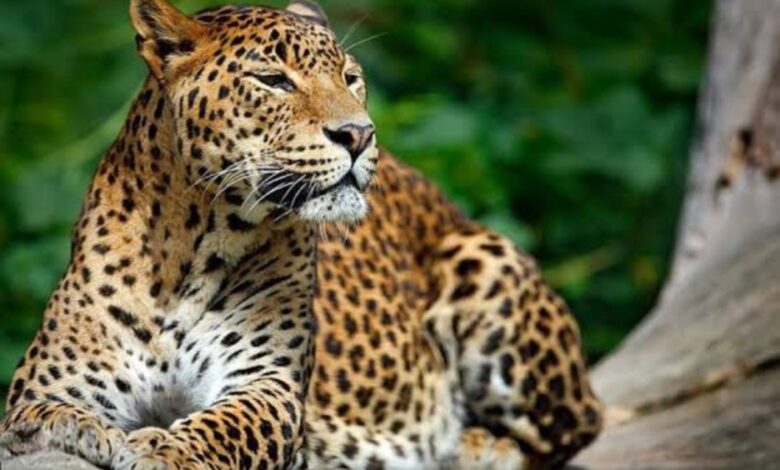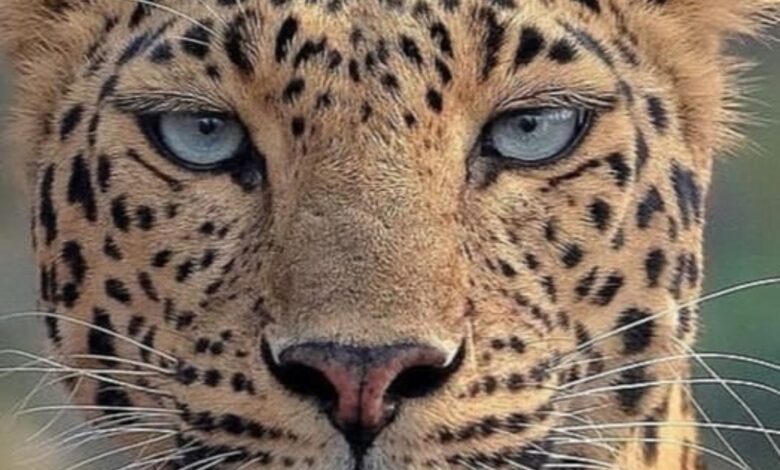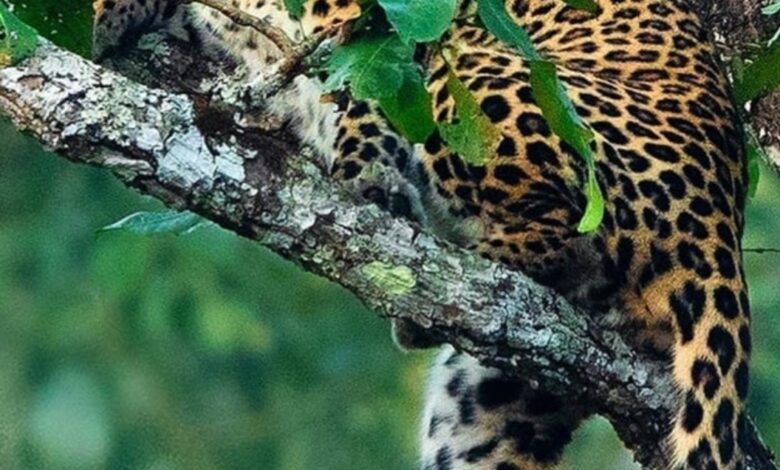Introduction
Leopards (Panthera pardus) are large wild cats known for their spotted coats and adaptability to various environments. They are part of the Panthera genus, which also includes lions, tigers, and jaguars. They have golden-yellow fur with black rosettes (spot patterns). Melanistic leopards, commonly known as black panthers, also exist. They are mostly solitary, stealthy predators; known for their ability to climb trees and carry prey into the branches to avoid scavengers. Leopards eat a wide range of animals including antelope, deer, monkeys, and even birds and rodents.
Leopards are highly adaptable and can live in forests, deserts, mountains, and even near human settlements, but their numbers are declining due to habitat loss, poaching, and human-wildlife conflict.
Distribution
Leopards have one of the widest ranges of any wild cat and are spread across the continents of Africa and Asia. The wild cat is found across sub-Saharan Africa, from savannas and forests to mountainous regions in countries like Kenya, South Africa, Tanzania, Botswana, and others. Across Asia, leopards are split into several sub species resteicted to specific geographical areas. The Indian leopard (Panthera pardus fusca) is distributed across India, a major stronghold; and found across most of the country. Sri Lanka has its own subspecies (Panthera pardus kotiya). China and Russia are home to the Amur leopard (Panthera pardus orientalis). Amur leopard is critically endangered, but numbers are slowly increasing thanks to dedicated conservation work. The Javan leopard subspecies is restricted to the island of Java in Indonesia (Panthera pardus melas). The Arabian leopard (Panthera pardus nimr) is critically endangered. This is the smallest among all the leopard sub species and distributed across parts of Oman, Yemen, and Saudi Arabia.The Sri Lankan, Javan, and Arabian leopards are also at high risk and need urgent protection.
Human-leopard conflict: The root causes
Human-leopard conflict occurs when leopards and people come into contact, often resulting in attacks on humans, livestock predation, or retaliatory killings of leopards. This conflict is common in regions where human settlements overlap with leopard habitats, such as parts of Africa India, West, Central and Southeast Asia.
The main causes of human-leopard conflict involves habitat loss. Rapid deforestation and urban expansion have pushed leopards into human-dominated landscapes. Agricultural encrachents into forested areas and expansion of human settlements in leopard territory have lead to frequent encounters between leopards and humans. Furthermore, overhunting of wild prey have forced leopards to hunt livestock or stray dogs due to their depleting prey bases in their natural ecosystem. Leopards are particularly attracted to human settlements due to an abundance of stray dogs. The villagers often kill leopards in response to attacks, worsening this perpetual conflict.
Impact of Human-Leopard Conflict
Human-leopard conflict refers to the interaction between humans and leopards that leads to negative consequences for either or both species. These conflicts are especially common in areas where human settlements encroach into leopard habitats or where leopards have adapted to living near human-dominated landscapes.
Human Casualties: While leopards rarely attack unprovoked, defensive or predatory attacks can lead to injuries or fatalities.
Livestock Losses: Farmers suffer economic losses when leopards prey on cattle, goats, and poultry.
Leopard Mortality: Retaliatory killings, poaching, and accidents (e.g., road kills) threaten leopard populations.
Psychological Impact: Fear of leopards creates anxiety among local communities.
Mitigation strategies to deal with the challenges of human-leopard conflict
The human-leopard conflict requires a balance between conservation and human safety. Long-term solutions involve habitat protection, sustainable land-use planning, and community engagement. Some long term sustainable strategies could include:
Securing Livestock: Enclosures and reinforced sheds can effectively prevent leopard attacks on cattle, goats and sheep as well as poultries.
Community Awareness Programs: Educating people on leopard behavior reduces panic and encourages coexistence.
Prey Conservation: Protecting wild prey species minimizes leopard dependence on livestock.
Use of Non-Lethal Deterrents: Motion-sensor lights, loud noises, and fencing can keep leopards away.
Translocation and Monitoring: Relocating problem leopards and tracking their movement helps reduce conflict.
Stray Dog Population Control: Reducing stray dogs lowers leopard attraction to human settlements.
Rapid Response Teams: Wildlife authorities can intervene quickly to prevent human casualties and retaliatory killings.
Future
The future of leopards is uncertain and varies depending on the region and subspecies, but overall, it’s a mix of concern and cautious hope. Deforestation, urbanization, and agriculture are shrinking leopard habitats. Leopards often come into conflict with humans when they prey on livestock. Their skins, bones, and other parts are still in demand on the black market. Isolated groups make breeding and genetic diversity harder, leading to inbreeding risks.
Climate Change has been altering habitats and prey availability, making survival difficult for many sub species. However, comprehensive conservation efforts in the form of protected areas, wildlife corridors, and anti-poaching laws are making a difference in some regions. Programs that educate and involve locals are reducing conflicts and boosting coexistence. Camera traps, satellite tracking, and Artifical Intelligence are helping researchers better understand and protect leopards.










